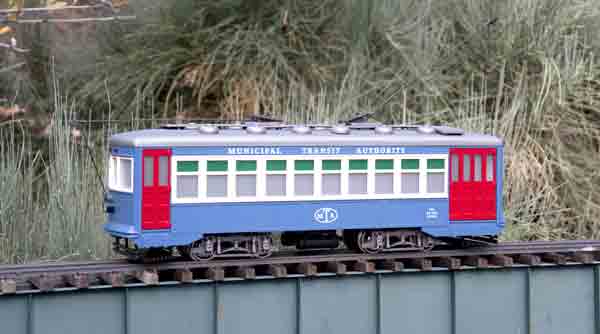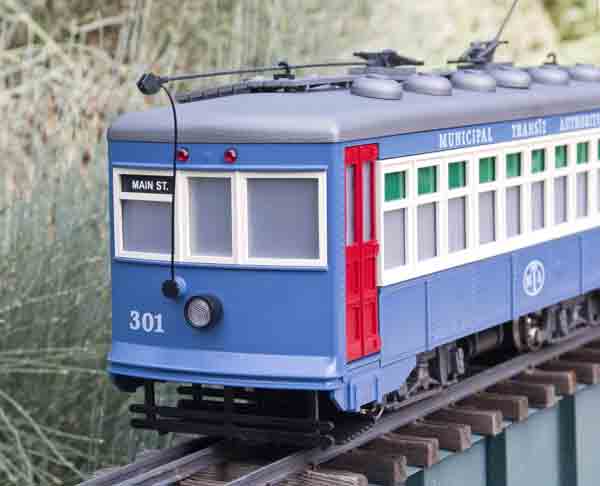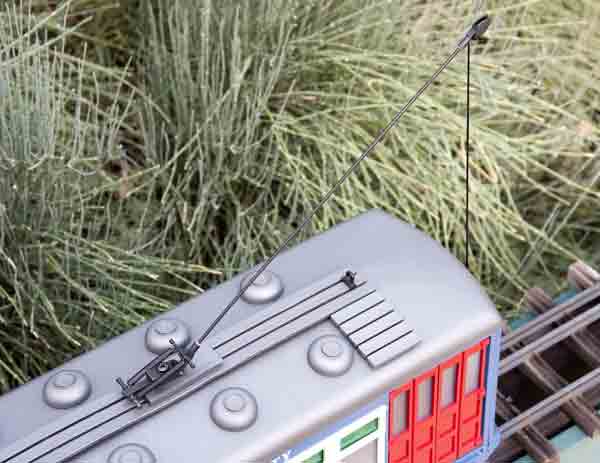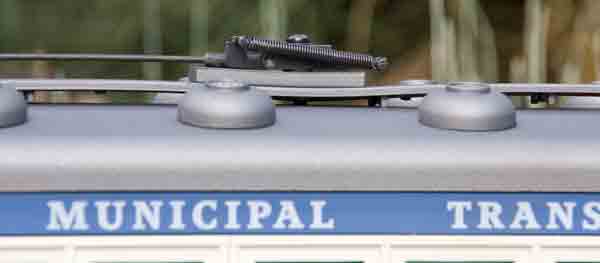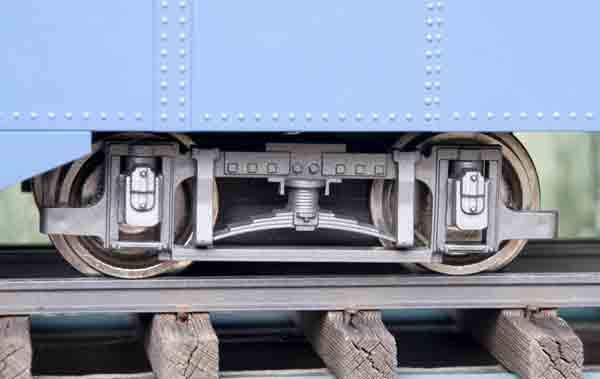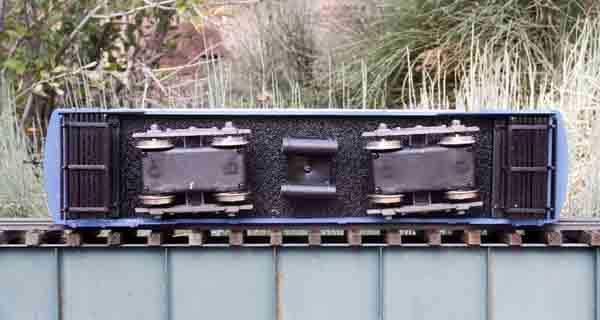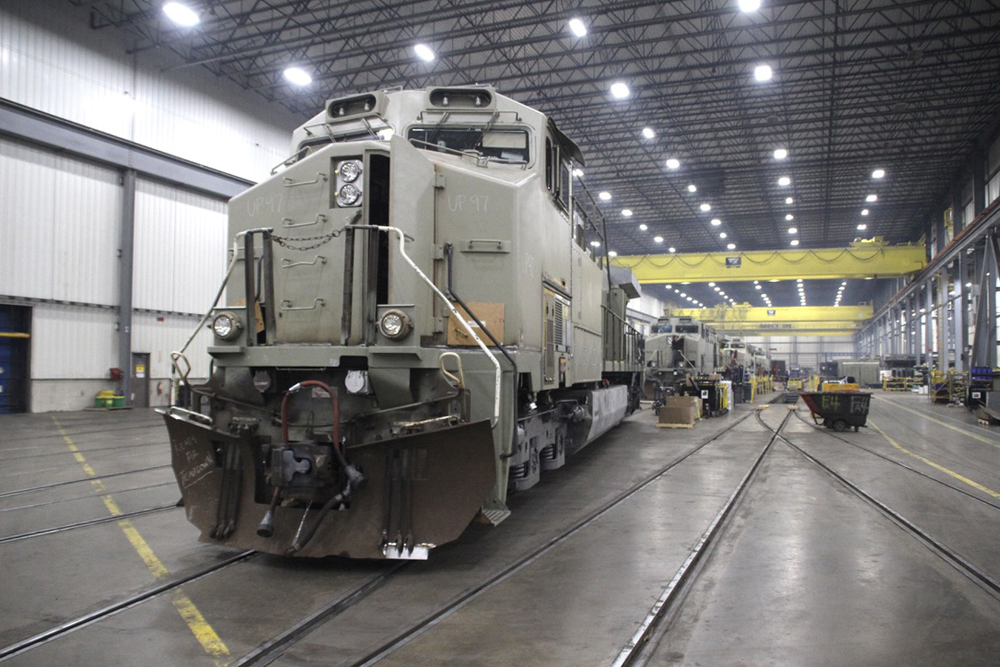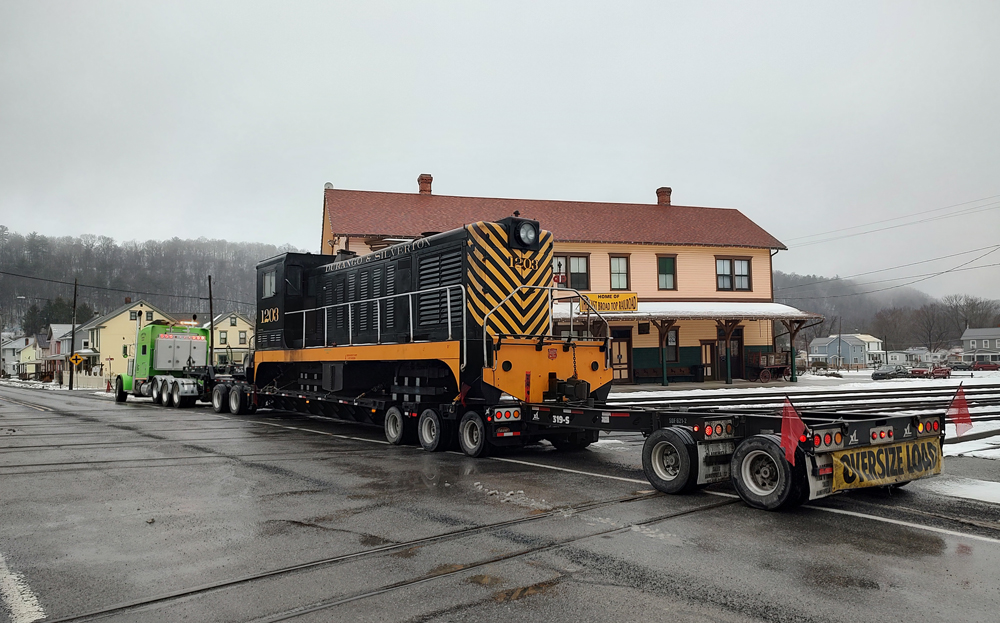Hartland Locomotive Works
PO Box 1743
LaPorte IN 46352
Price: $335.95
Website: www.h-l-w.com
All-plastic model of a two-truck Birney streetcar; one powered truck; directional lighting; illuminated interior; power pickup from wheels only (all wheels); dummy trolley poles. Dimensions: Length, 18″; width, 4″; height (over roof), 5¾”
Pros: Good representation of a two-truck Birney streetcar; simple electrics; good multi-color paint job; smooth, quiet operation
Cons: Trolley poles unpowered (can be made operational); no interior detail
The model is constructed primarily of injection-molded, plastic parts. When compared to photographs of the prototype, it appears to be an accurate representation of a two-truck Birney Safety Car. Doors do not open and the windows are frosted, preventing the interior to be viewed. The interior of the car contains only the electrics required for the lights. There is a headlight at either end of the symmetrical car, as well as two interior lights, which are on brass stalks that extend up from the floor. The lights are incandescent grain-of-wheat bulbs, as opposed to LEDs. As such, they get brighter as more power is applied.
The car features one powered truck and one dummy, although both trucks serve to pick up power. As supplied, the trolley poles are not functional, although the instructions provided with the model say they can be made so. For information on how to do this conversion you must contact the factory. Trolley poles are all metal and have shoes (as opposed to wheels) on their ends. I found that the poles on our review sample did not swivel. Each is held to the roof with a single screw that had been screwed down so tightly that they not only bound up the poles but deflected the roof walk as well. Loosening the screws a little freed up the poles but it appears the roof walk is permanently deflected.
Plastic hooks in the roof walks hold the poles in the “down” position. Separate pole cables are supplied that you may install, or not, as you wish. For installation, a cable is slipped through a hole in the trolley shoe and knotted. The other end is inserted through a hole provided in the end of the car body. The pole is raised or lowered to the desired position, and a plastic plug is inserted into the hole, holding the cable in position. On a full-size car, the cable would automatically retract into a cable reel. An imaginative modeler might be able to rig up some kind of retracting mechanism.
The car is painted a subdued blue, with red doors and white windows. The paint job is excellent. The unit is lettered for the “Municipal Transit Authority” and the destination signs at each end say “Main Street,” making this a pretty generic streetcar. Lettering on the side is white but is not as opaque as it could be.
Instructions supplied with the car state that this car runs on 12V linear DC only. Pulse power, it is also stated, will cause the motor to overheat, as will more than 12V. DCC can be installed by the user but, again, it must be a system that provides only linear DC power.
In operation, the car runs smoothly and quietly. Slow-speed operation is excellent. At full voltage (12V), the top speed did not seem very fast—perhaps 15-20 scale miles per hour. However, contrary to the instructions, when I bumped the voltage up to, say, 15-18V, the car travelled much faster. To resolve this apparent conflict between the printed instructions and actual experience, I contacted the factory. I was told that the information included in the instructions was for some of the company’s other products and should not have been included in our review sample. In fact, the Mabuchi motor supplied with the streetcar is good up to 30V DC, so feel free to give it the juice.
Hartland’s two-truck Birney Safety Car is a welcome addition to the few choices we have when it comes to street-railway equipment. It is a basic, well-made machine that looks good and has excellent performance characteristics.





